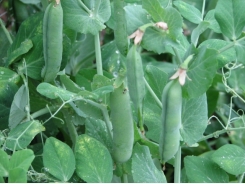Learn how to grow carrots

So many home gardeners find it difficult to grow these vegetables, but there’s no need to give up on carrots, says Bill Kerr.
These Kuroda carrots have grown out to full size. Photo: Bill Kerr
Carrots have different requirements from those of other vegetables.
The first has to do with irrigation. The carrot plant has a very deep root system; it grows down much further than the tip of the tap root (the part we eat).
The total length of the system can easily exceed 2m. These are the fine roots that source the water and nutrients.
Irrigating down to this depth would take about 200mm of water if the soil is dry.
This is clearly impractical in a mixed vegetable patch, so irrigate to a depth of about 30cm, and rely on good rain to soak deeper into the soil. Too many gardeners irrigate frequently, but lightly.
This may work for many other vegetables, but not for carrots, and you’ll end up with a small yield of short carrots.
Use a garden trowel or other suitable tool to check the moisture content of the soil before irrigating.
Check it again the day after irrigating to ensure it is moist enough. Irrigating every five to seven days is about right.
The second requirement is loose soil; a compacted soil layer will restrict growth. If the soil is compacted, push a garden fork to full length and pull it back lightly to loosen the soil.
The next requirement is mulch. Carrot seeds are small, so sow them in shallow furrows in rows.
Then cover the rows with a thin layer of lawn clippings or suitable mulch, just thick enough to conserve moisture and prevent crusting, while still allowing the plants to grow through.
A light daily irrigation with a watering can may be necessary until the plants emerge.
Thereafter, irrigate to the 30cm depth.
Thinning
As carrot seed is small and usually cheap, it is easy to sow them too densely. If this happens, thin out the emerging plants. This is crucial; contrary to popular belief, the sunlight harvested by the leaves is far more important than the area occupied by the roots.
Aim for a population of between 800 plants/m² and 1 000 plants/m² of bed surface. Rows 20cm apart should give 20 plants/m of row.
Thin out the plants when they are at the four-leaf stage and after irrigating. At this stage, you can properly see what you are doing and the thinned plants are easy to uproot.
Carrots can be harvested when still quite young. When ready, they can last in the soil for quite some time, enabling one planting to give an extended harvest season.
I recommend planting the Kuroda variety for a home garden. It is easy to grow, fairly disease-resistant and makes for good eating.
Related news
Tools

Phối trộn thức ăn chăn nuôi

Pha dung dịch thủy canh

Định mức cho tôm ăn

Phối trộn phân bón NPK

Xác định tỷ lệ tôm sống

Chuyển đổi đơn vị phân bón

Xác định công suất sục khí

Chuyển đổi đơn vị tôm

Tính diện tích nhà kính

Tính thể tích ao




 Growing Potatoes Successfully – Seed Potatoes
Growing Potatoes Successfully – Seed Potatoes  Cropped: How to Grow Shiitake Mushrooms
Cropped: How to Grow Shiitake Mushrooms